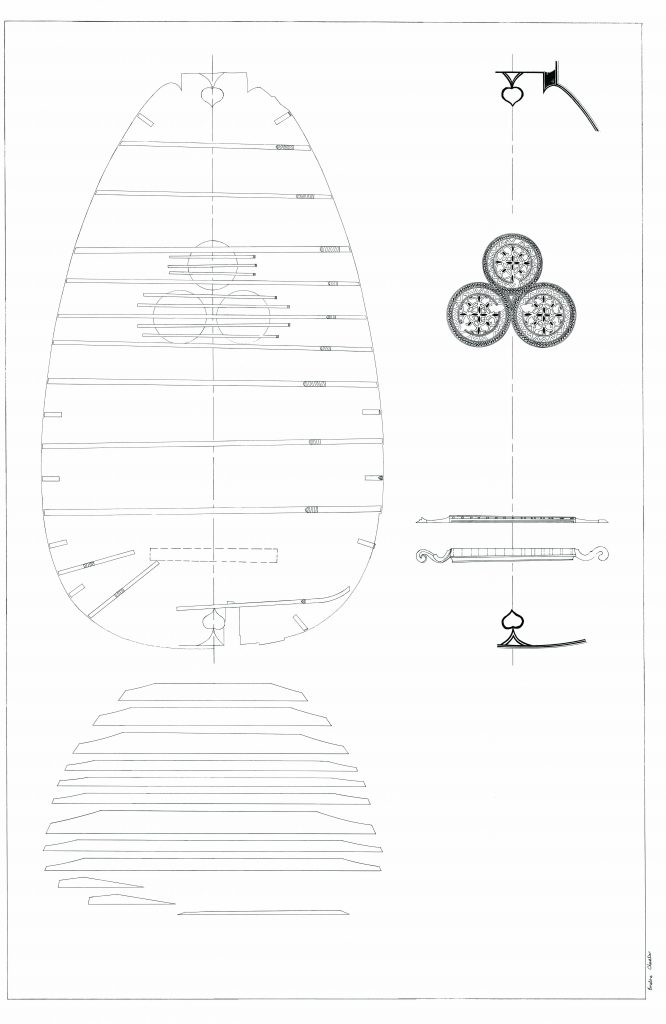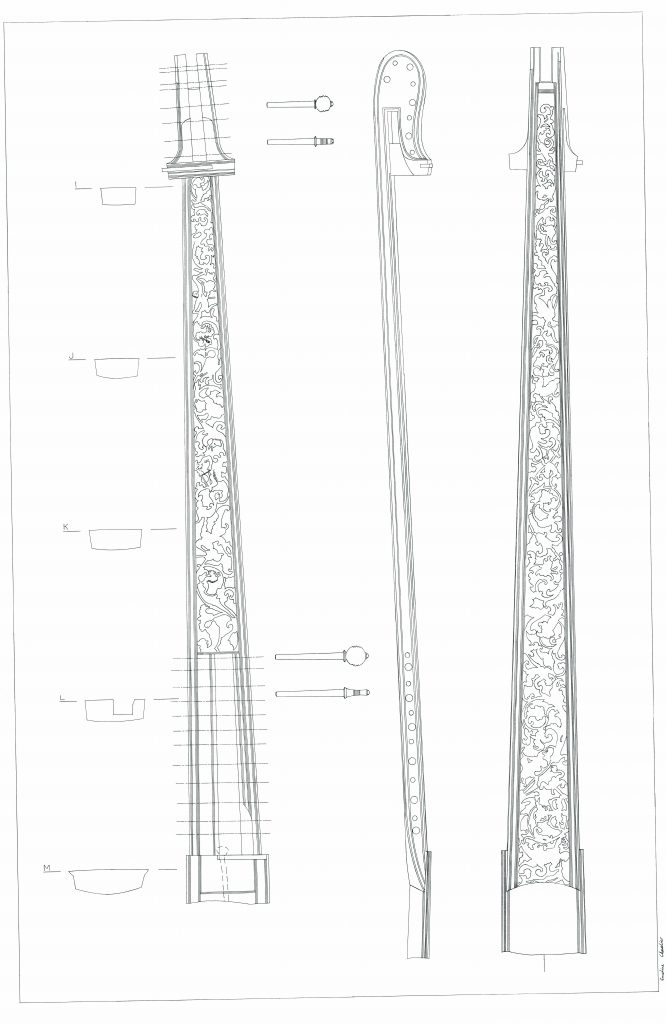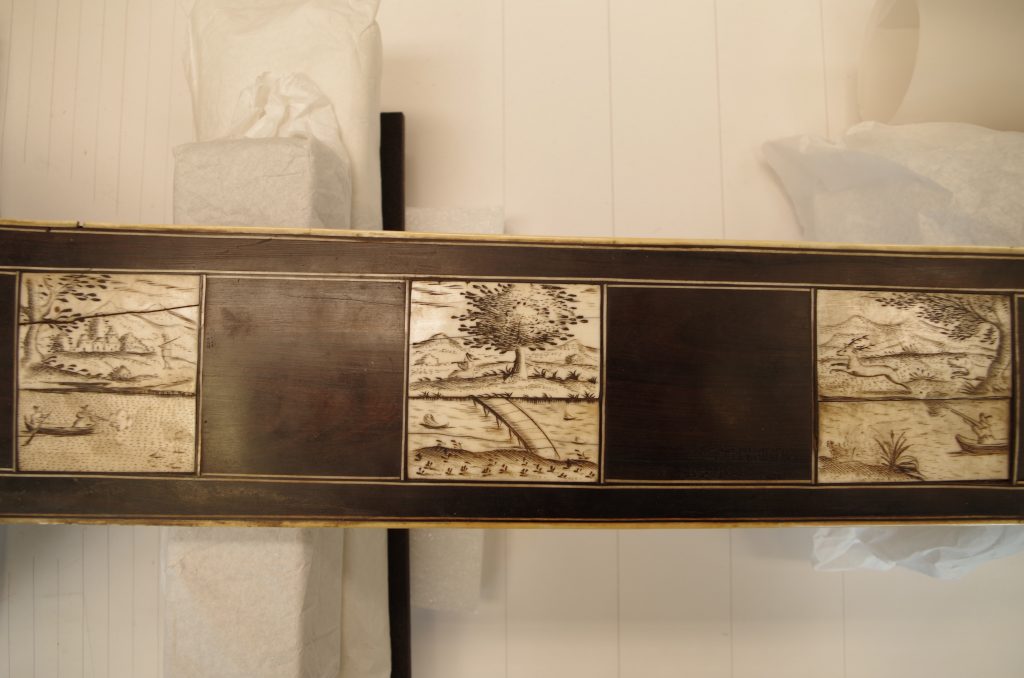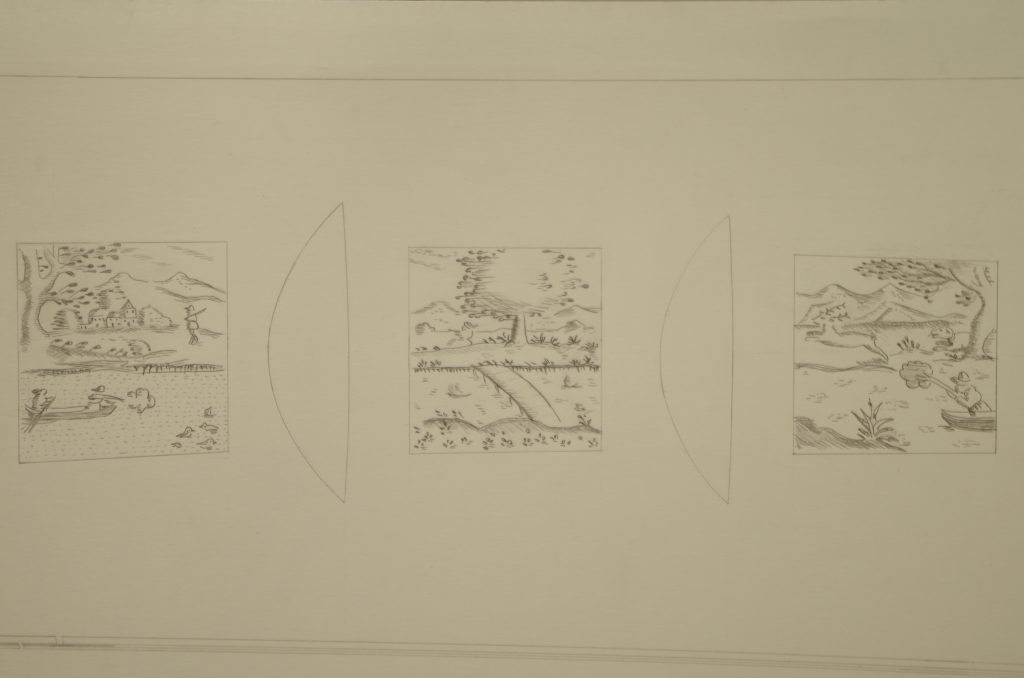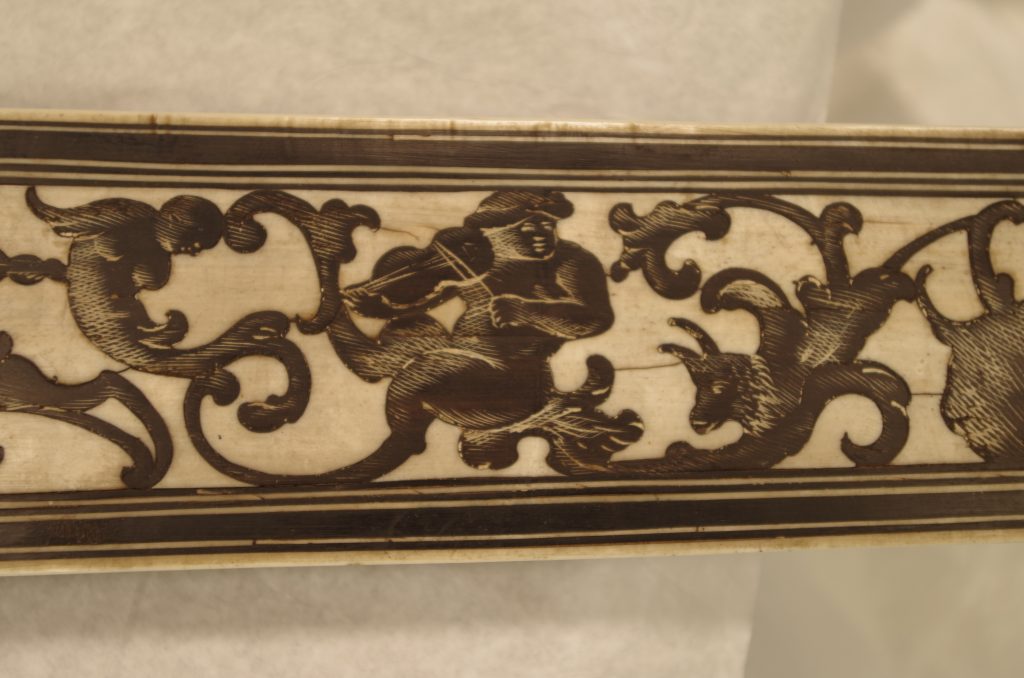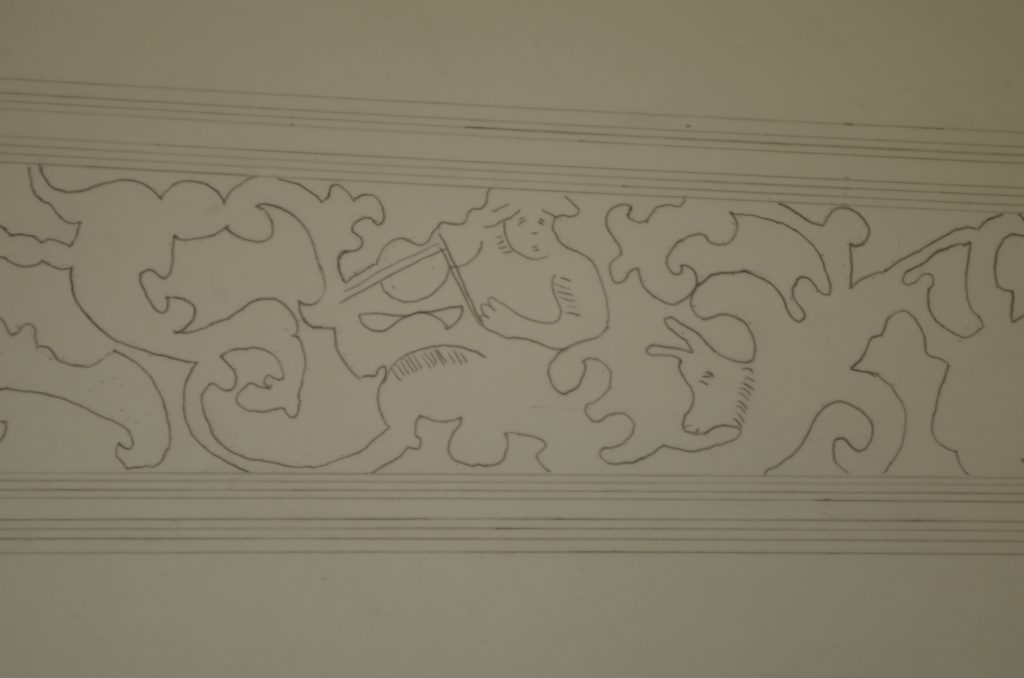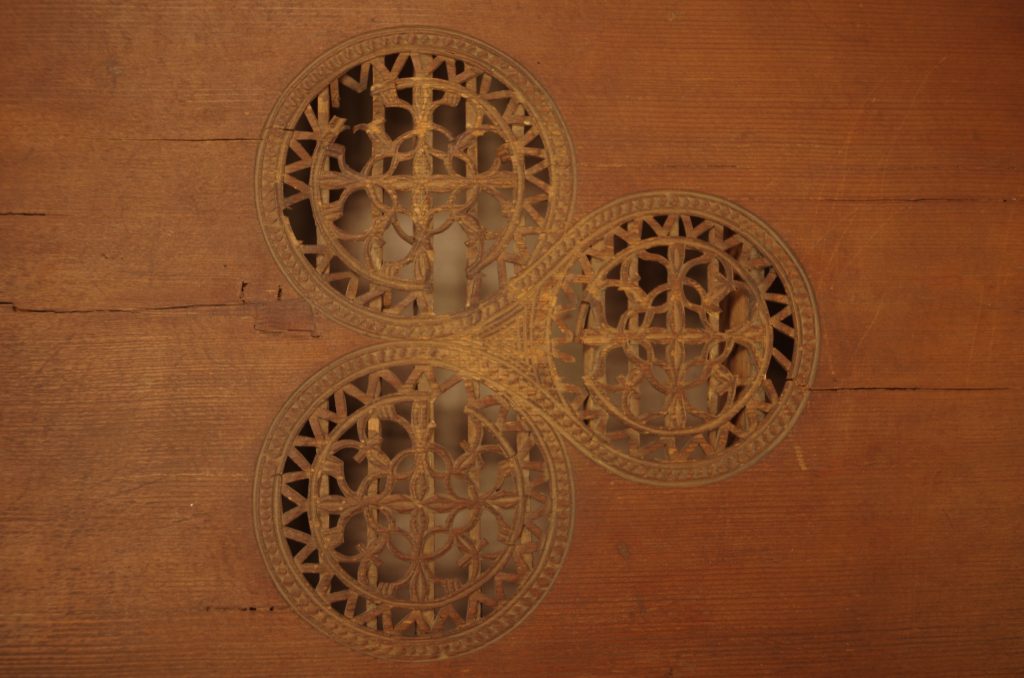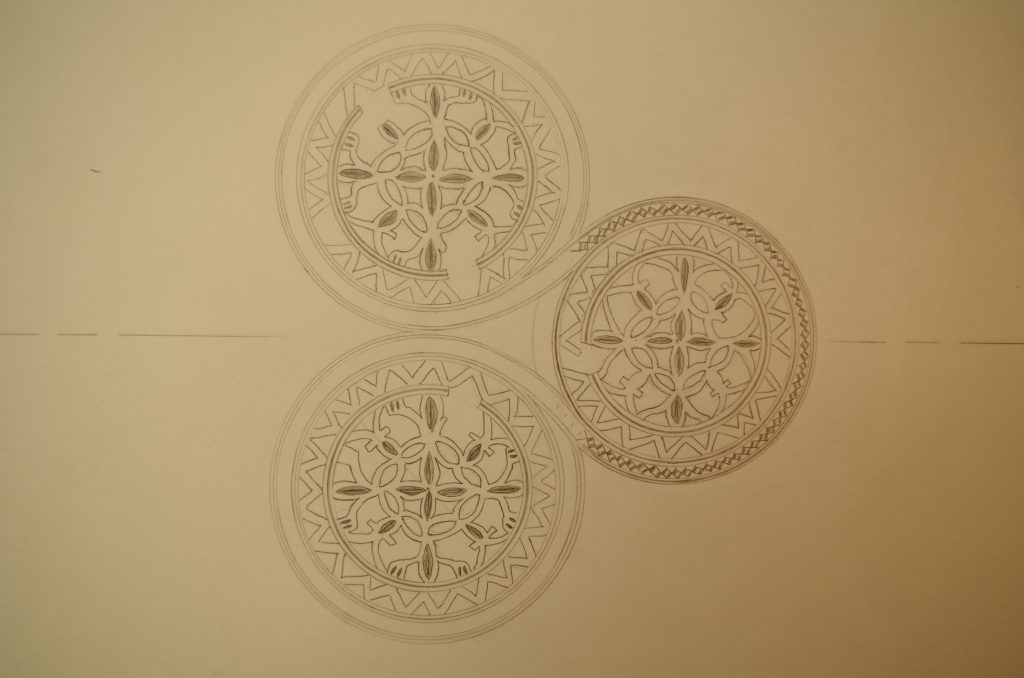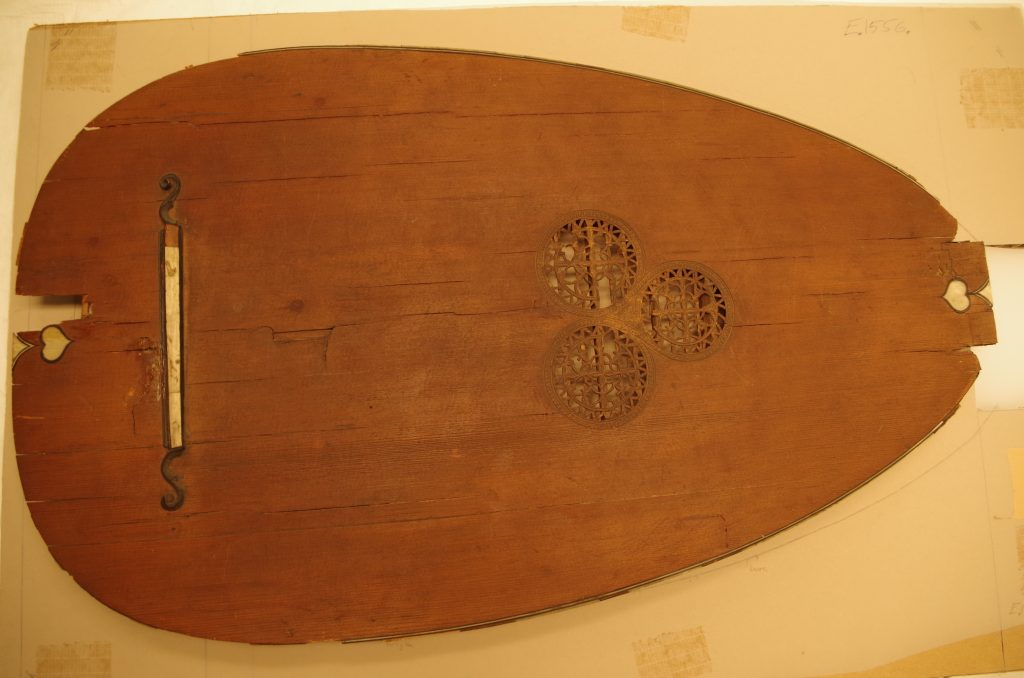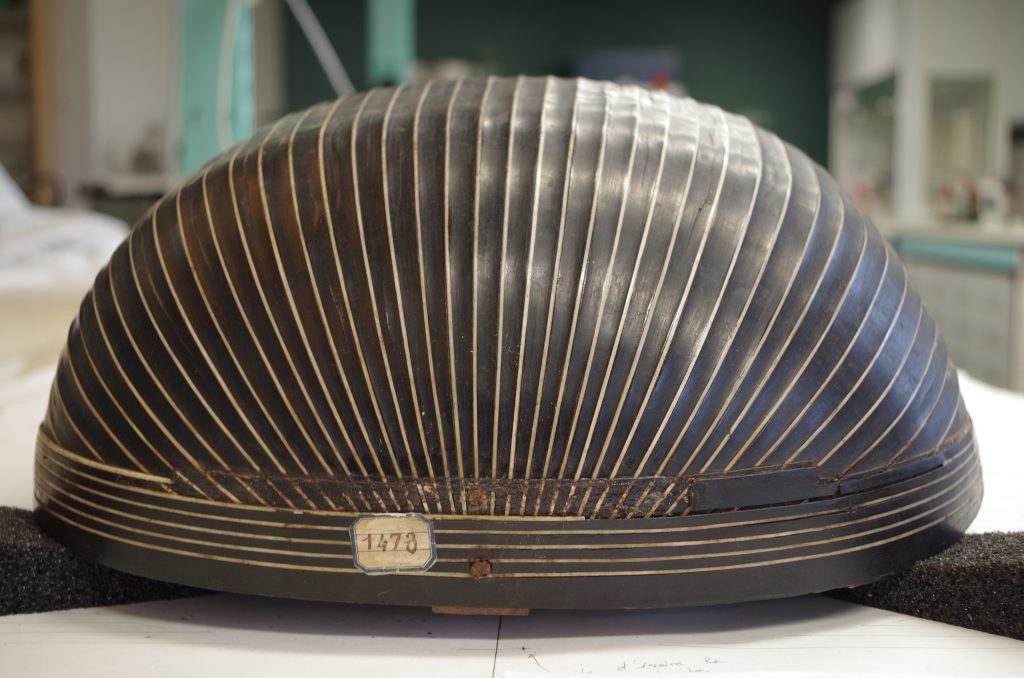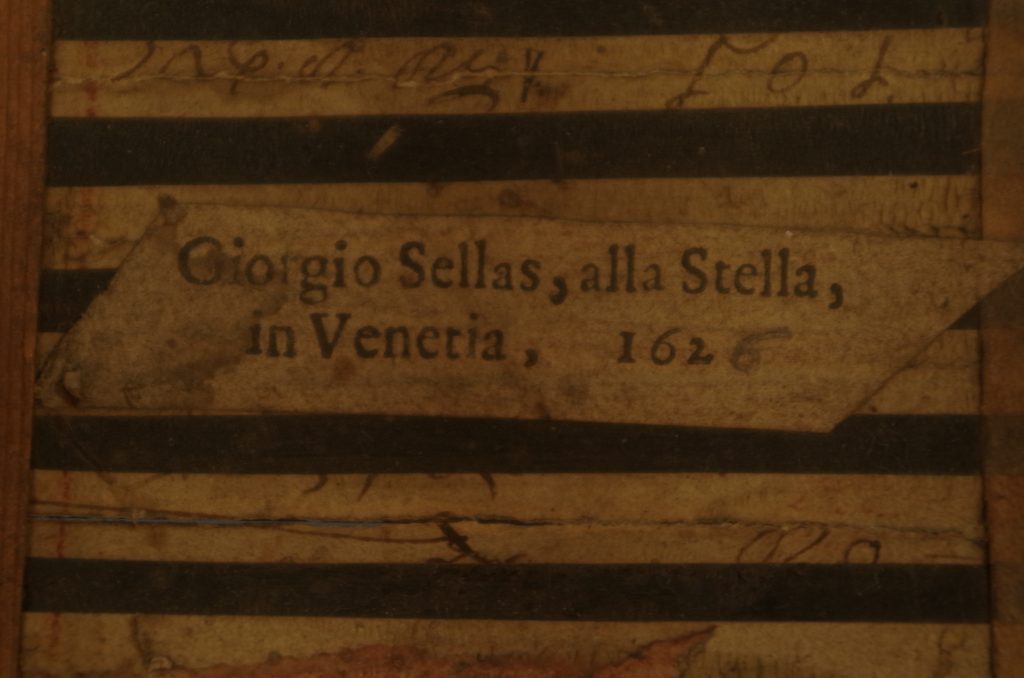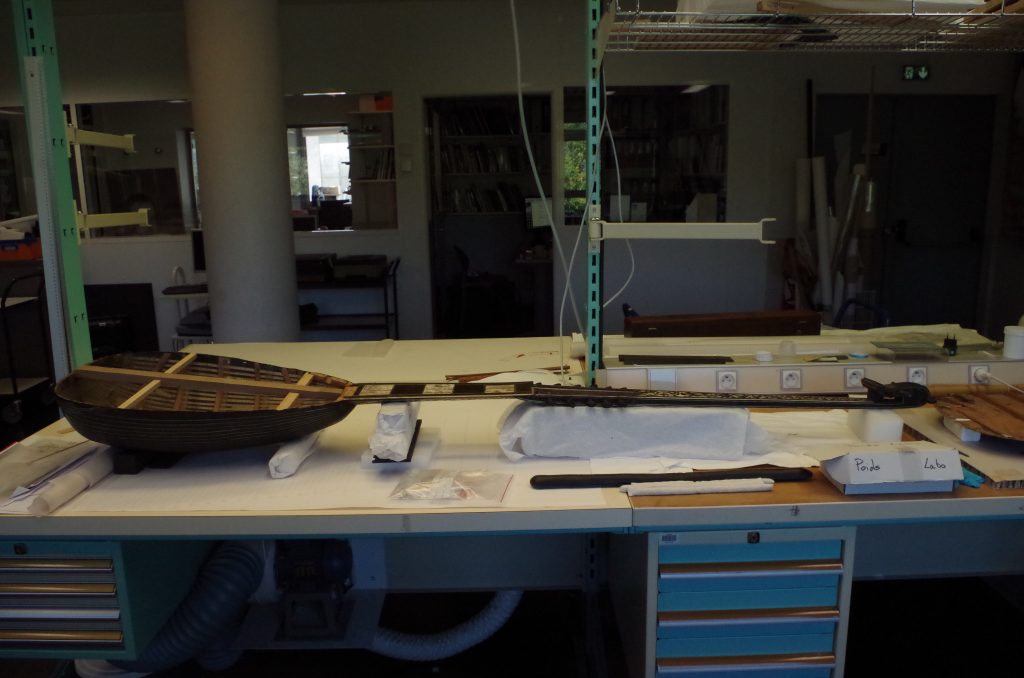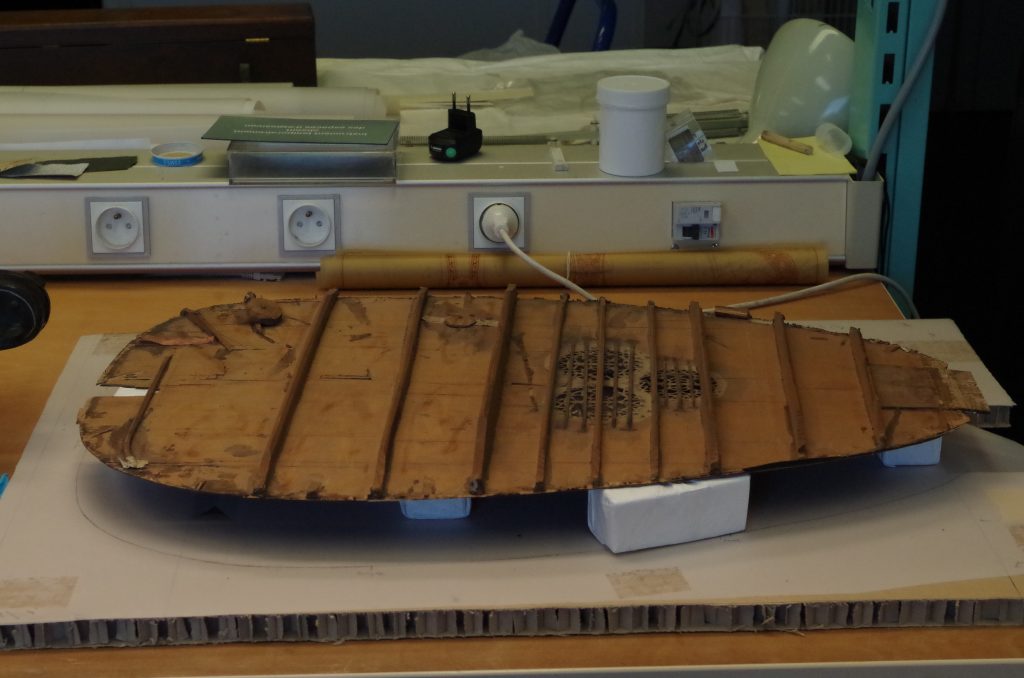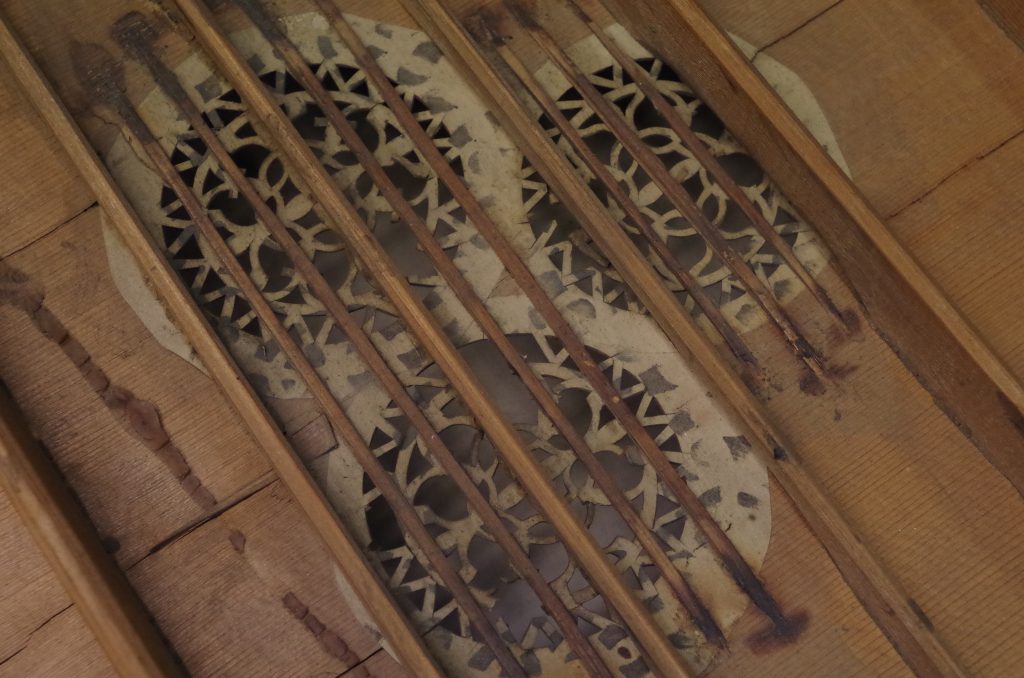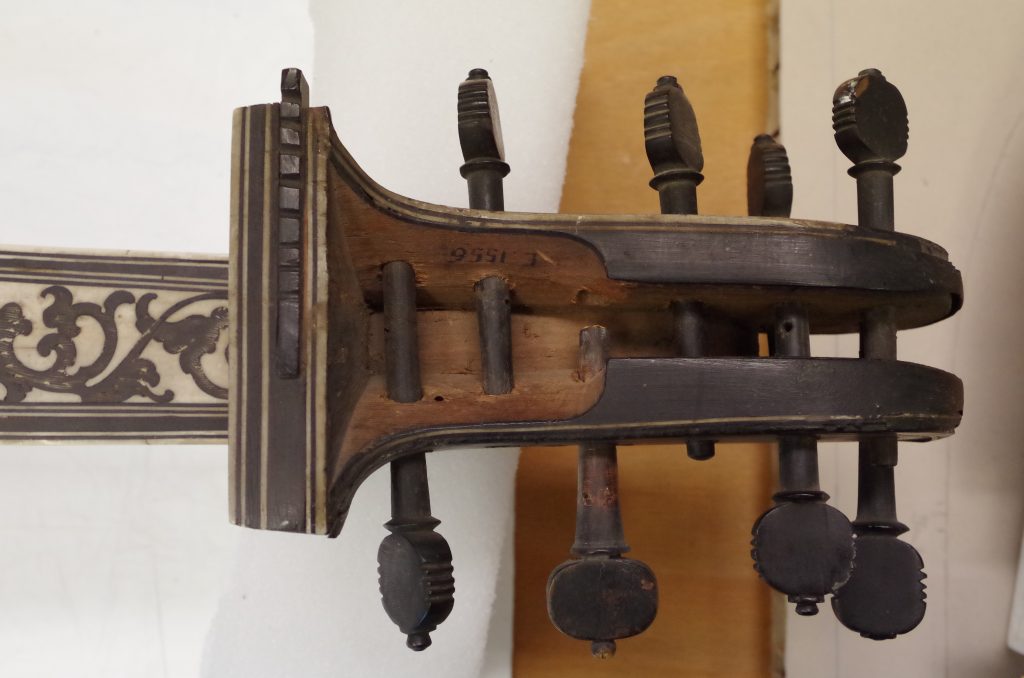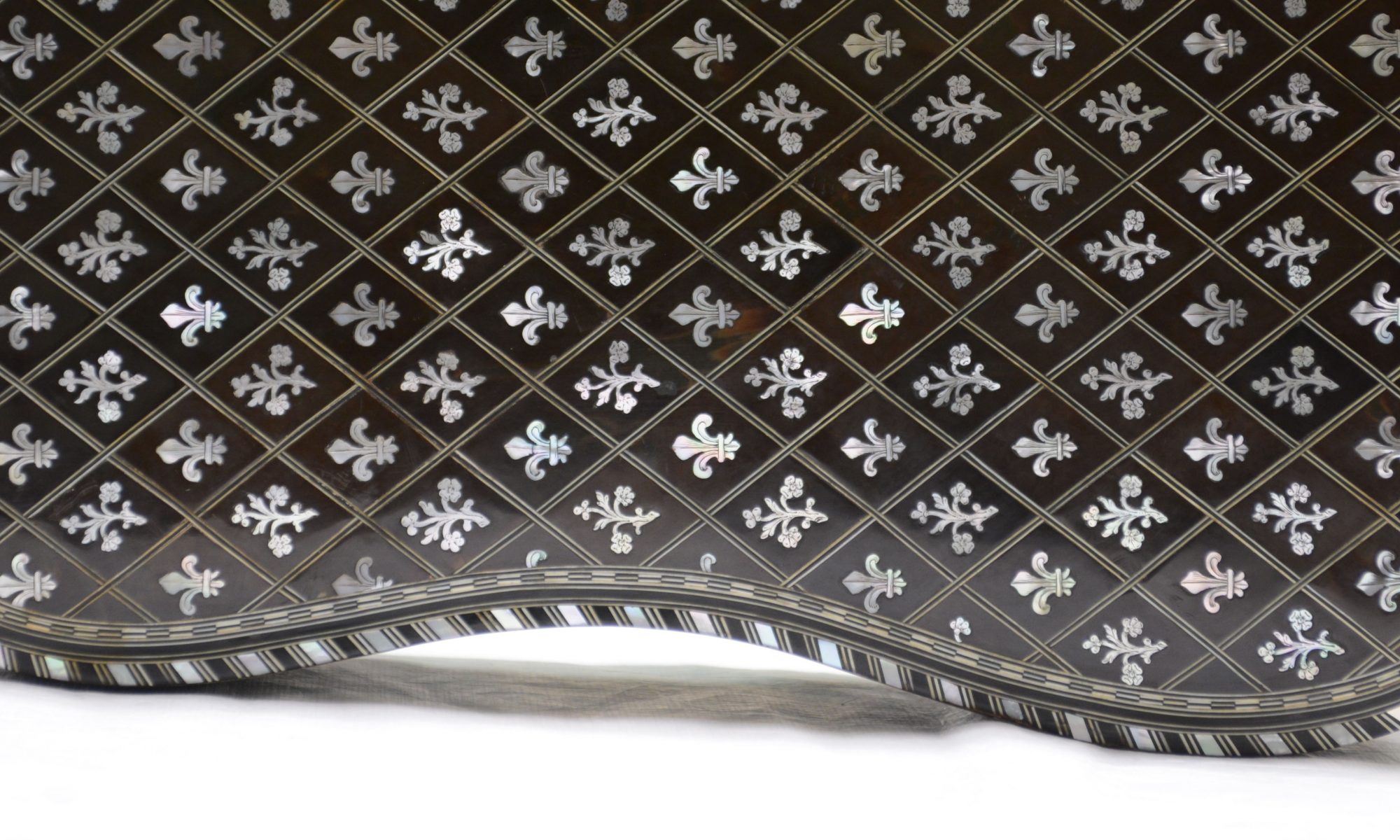Table of Contents
Beside the restoration work, I regularly participate in research projects, in particular with the Cité de la Musique – Philharmonie de Paris. This allows me to better understand the history of the guitar and to enrich my practice as a restorer. Below are two example projects:
Analysis of the collections – Cité de la musique
This project was carried out as part of a session at the laboratory of the Cité de la Musique – Philharmonie de Paris in collaboration with the laboratory team.
Project :
We propose to build a research project around the changes of the guitar over a period of a century and a half beginning in 1708 and ending in 1857, 5 years after the date of creation of the guitar of Antonio de Torres the oldest known to this day, and preserved in the museum of music in Paris under the inventory number E.2001.1.1. After a period of glory directly linked to the interest shown in it by king Louis XIV, a talented guitarist, the guitar was forgotten and was used as raw material for the production of numerous hurdy-gurdies throughout the first half of the 18th century and beyond. This period of manifest disinterest resulted in a singular absence of appearance of the instrument during concerts, or even in the non-existence of composed works.
This work has a double objective. On the one hand, it is a question of taking a fresh look at the organological evolution of the instrument, associating a phenomenological point of view with a historical and cultural contextualization. On the other hand, this study aims to bring out some intervention and repair practices applied during this period by makers, musicians and “amateurs” to this corpus of items. We don’t find any description appears in the tact books treating of this topic during the 18th and 19th centuries.
Method:
- Inventory of the literature of the documentary fund of the museum concerning the problematic of our subject, going from the end of the 17th century to the middle of the 19th century, treating as well music (composition), guitaristic or instrumental construction. The books and articles selected have been classified in a bibliography.
- A corpus, among the instruments in the museum’s collection, of guitars made during this period has been selected.
| Instrument | Date | Place | Country |
| Jean Voboam E.999.15.1 | 1708 | Paris | France |
| Antonio Stradivari E.904 | 1711 ? | Crémone | Italy |
| Claude Boivin E.209 | 1749 | Paris | France |
| Jean Nicolas Lambert E.979.2.55 | 1760 | Paris | France |
| Jacques Philippe Michelot E.2015.4.1 | 1767 | Paris | France |
| Gérard Joseph Deleplanque E.1212 | 1785 | Lille | France |
| Renault et Chatelain E.394 | 1780 | Paris | France |
| Juan Garcia Pagès E.984.9.1 | fin 18e | Càdiz | Spain |
| Francesco Silvestri E.32 | 1808 | Vérone | Italy |
| Joseph Laurent Mast E.2000.12.1 | vers 1820 | Paris | France |
| Jean Nicolas Grobert E.375 | vers 1830 | Paris | France |
| Louis Panormo E.2006.1.1 | 1850 | Londres | UK |
| René Lacôte E.995.26.1 | 1850 | Paris | France |
| Antonio de Torres E.2001.1.1 | 1852 | Almeria | Spain |
| Antonio de Torres E.963.2.1 | 1883 | Almeria | Spain |
- A first method of organological analysis has been implemented and tested on a few instruments from this corpus.
This analysis includes a description of the characteristics of the instrument accompanied by measurements, a detailed diagram of the bracing of the soundboard, a calculation of the volume of the case. It also includes an analysis of the transformations that have been done on the instrument over time. To do this, the instruments were observed with an endoscope and UV rays. This analyzes are documented in the form of digital images.
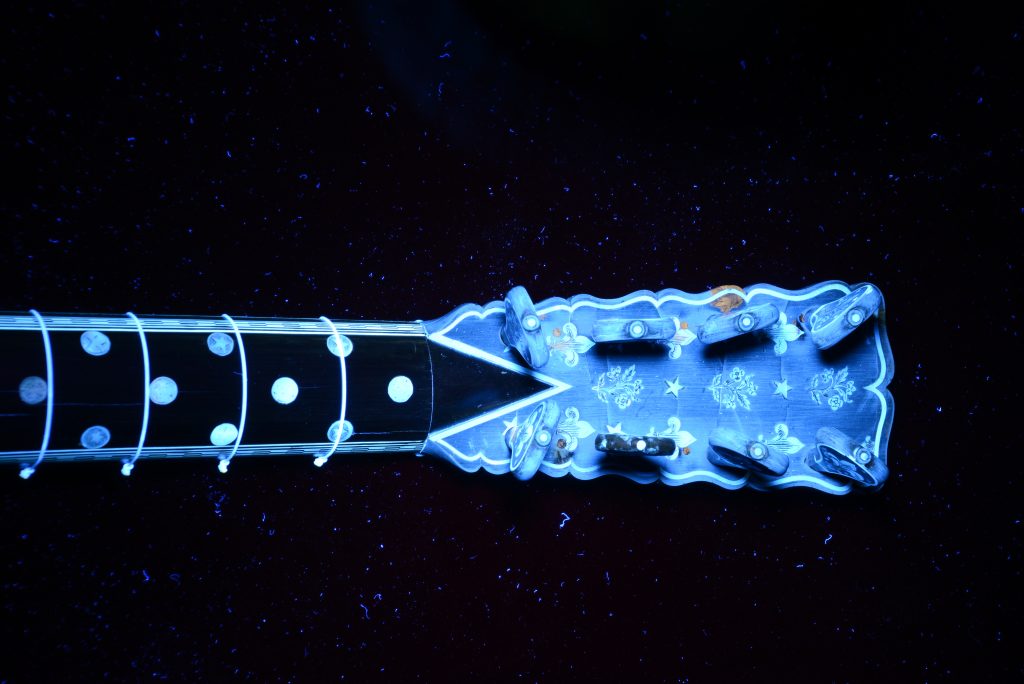
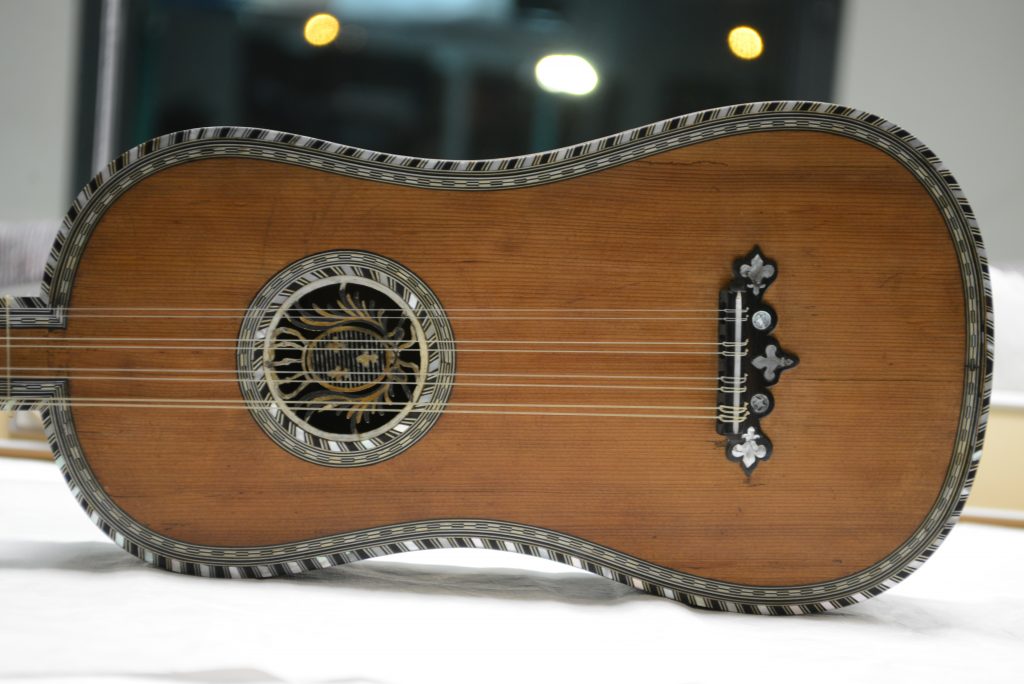
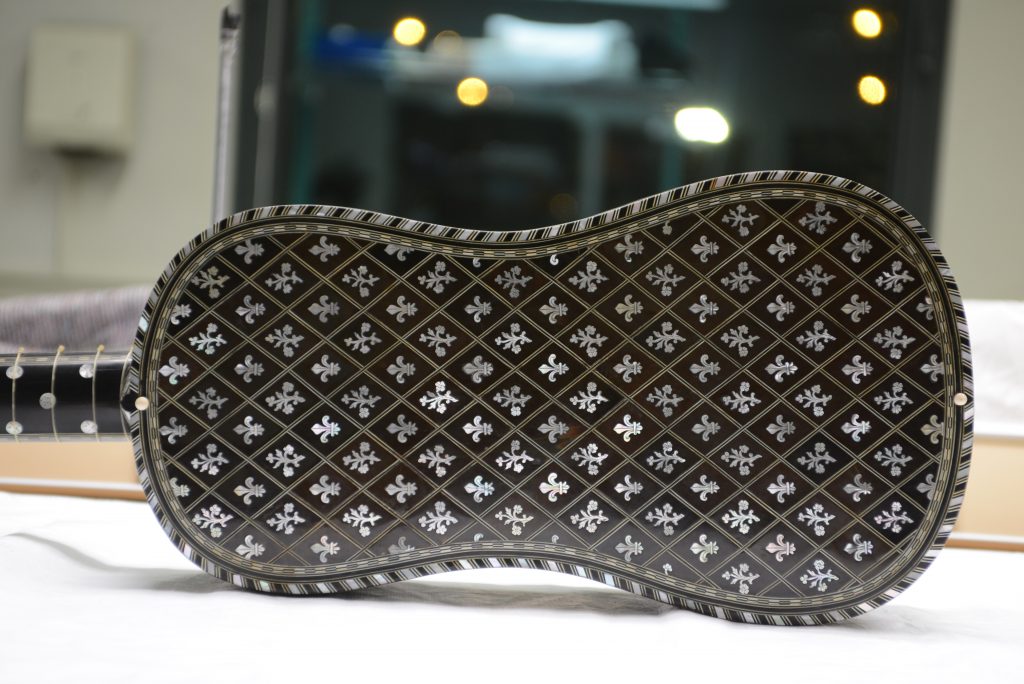

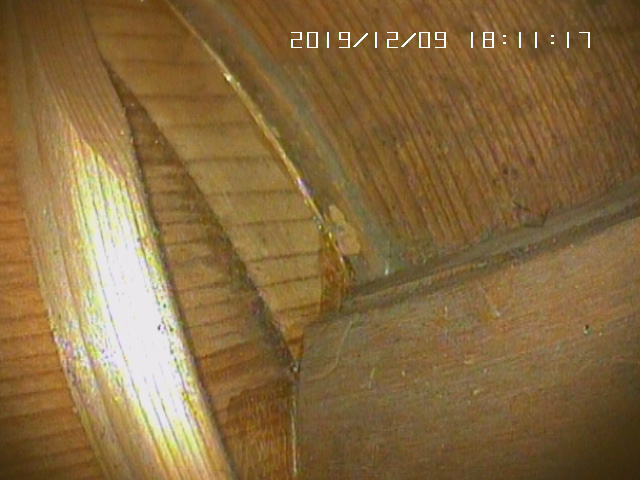
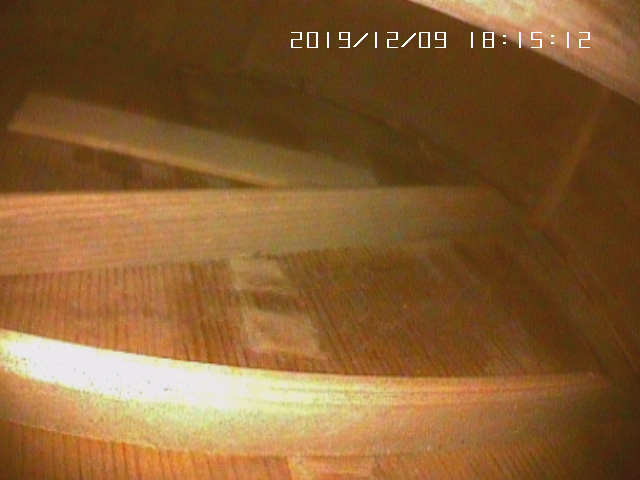

Technical drawing
Projet :
Dans le cadre d’un projet de revalorisation des savoir-faire et des techniques au sein du laboratoire de recherche de la Cité de la musique – Philharmonie de Paris, j’ai eu l’occasion de réaliser un dessin de ce théorbe de Giorgio Sellas, fabriqué à Venise en 1626. Cet instrument a été choisi car il démontre un intérêt de par son ancienneté, c’est le plus ancien théorbe entier de la collection. Un projet de maintien en état de conservation a été mis en place pour cet instrument qui n’est plus en état de jeu, le dessin est dans ce cadre un support documentaire et permet l’éventuelle fabrication d’un fac-similé.
Méthode :
- Le dessin a été entièrement réalisé à la main (tracé sur une table à dessin)
- Il a été numérisé et mis au propre par informatique (Photoshop)
- C’est un triptyque de trois planches A0 sur lesquelles sont reportées les différentes parties de l’instrument
- Il a été réalisé avec des outils de mesure manuels, mais aussi avec l’aide de radiographies

